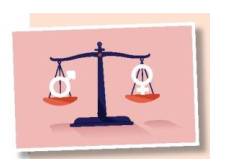Hãy nhập câu hỏi của bạn vào đây, nếu là tài khoản VIP, bạn sẽ được ưu tiên trả lời.

Đáp án:
1. In Korea, many people still feel that women should be in charge of ________ aftergetting married.
A. Housekeeping B. homemaker C. house husband D. hoouseholder
2. The principle of equal pay is that men and women doing _______ work should get paid the same amount.
A. same B. alike C. similar D. identical
3. In Yemen, women have less _______ to property ownership , credit, training and employment.
A. possibility B. way C. use D. access
4. Women are more likely to be victims of ______ violence .
A. domestic B. household C. home D. family
5. International Women's Day is an occasion to make more ______ towards achieving gender equality.
A. movement B. progress C. improvement D. development
6. Reducing gender _______ improves productivity and economic growth of a nation.
A. equality B. inequality C. possibility D. development
7. Women with high qualifications _______ to managers.
A. must promote B. must be promoted C. must move D. rights
8. A common reason that someone _______ more for similar work is because of his or her experience or ''length of service".
A. may be paid B. should not be paid C. can be paid D. must be followed
9. True gender equality ________ when both men and women reach a balance between work and family.
A. can achieve B. should be achieved C. can be achieved D. should achieve
10. All forms of discrimination against all women and girls _____ immediately everywhere.
A. must be taken away C. must be allowed
B. must be ended D. must be followed
1. In Korea, many people still feel that women should be in charge of ________ aftergetting married.
A. Housekeeping B. homemaker C. house husband D. hoouseholder
2. The principle of equal pay is that men and women doing _______ work should get paid the same amount.
A. same B. alike C. similar D. identical
3. In Yemen, women have less _______ to property ownership , credit, training and employment.
A. possibility B. way C. use D. access
4. Women are more likely to be victims of ______ violence .
A. domestic B. household C. home D. family
5. International Women's Day is an occasion to make more ______ towards achieving gender equality.
A. movement B. progress C. improvement D. development
6. Reducing gender _______ improves productivity and economic growth of a nation.
A. equality B. inequality C. possibility D. development
7. Women with high qualifications _______ to managers.
A. must promote B. must be promoted C. must move D. rights
8. A common reason that someone _______ more for similar work is because of his or her experience or ''length of service".
A. may be paid B. should not be paid C. can be paid D. must be followed
9. True gender equality ________ when both men and women reach a balance between work and family.
A. can achieve B. should be achieved C. can be achieved D. should achieve

1. significantly
2. physically
3. Hopefully
4. promotion
5. high
6. expanded
7. professional
8. exploitation
9. educational
10. growth